Nile Crocodile
- March 5, 2024
- 0 comment
The Nile Crocodile, scientifically known as Crocodylus niloticus, is a majestic reptile that roams the freshwater habitats of sub-Saharan Africa. Renowned for its formidable presence and ancient lineage, this species stands as one of the largest crocodilians on the planet. With adult males reaching lengths of up to 16 feet or more, and females slightly smaller, Nile Crocodiles command respect and awe wherever they dwell. Their rough, dark-colored skin aids in camouflage within their watery domains, while their streamlined bodies, powerful jaws, and muscular tails make them efficient hunters both in water and on land.

These apex predators primarily inhabit slow-moving rivers, lakes, and marshes, though they’re adaptable enough to thrive in various environments. Nile Crocodiles play a vital role in maintaining the balance of ecosystems, preying upon a variety of animals including fish, birds, mammals, and even other reptiles. Despite their fearsome reputation, encounters with humans are relatively rare, though conflicts may arise in areas where their habitats intersect. Through conservation efforts and increased awareness, we can ensure the continued survival of these iconic creatures, preserving their place in the rich tapestry of African wildlife for generations to come.
| Category | Specification |
|---|---|
| Scientific Name | Crocodylus niloticus |
| Size | Adult males: Up to 16 feet (5 meters) or more |
| Adult females: Typically 10 to 13 feet (3 to 4 meters) | |
| Coloration | Rough, dark-colored skin |
| Habitat | Freshwater habitats such as rivers, lakes, and marshes |
| Distribution | Sub-Saharan Africa |
| Diet | Fish, birds, mammals, other reptiles |
| Predatory Behavior | Ambush tactics, lying in wait for prey |
| Threats | Habitat loss, poaching, human-wildlife conflict |
| Conservation Status | Least Concern (IUCN Red List) |
| Lifespan | Up to 70 years or more in the wild |
| Communication | Vocalizations, body language, chemical signals |
Majestic Predators of the African Waters
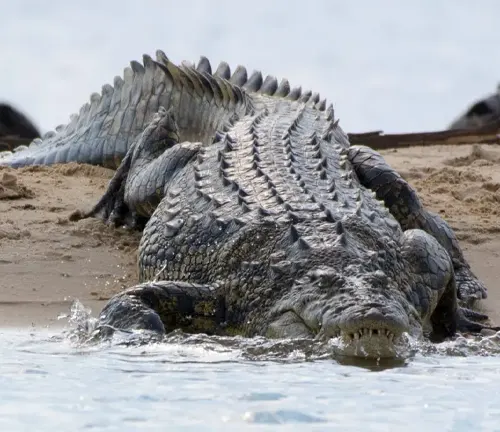
Crocodiles have long captured the imagination of humans with their ancient and formidable presence. Among these impressive reptiles, the Nile Crocodile (Crocodylus niloticus) stands out as one of the most iconic and fearsome species. From its physical prowess to its intricate behaviors, the Nile Crocodile is a creature of fascination and intrigue.
Physical Characteristics
Size
Nile Crocodiles are among the largest crocodilian species, with adult males reaching lengths of up to 16 feet (5 meters) or more. Females are typically slightly smaller, ranging between 10 to 13 feet (3 to 4 meters) in length. These impressive dimensions make them formidable predators in their aquatic habitats.
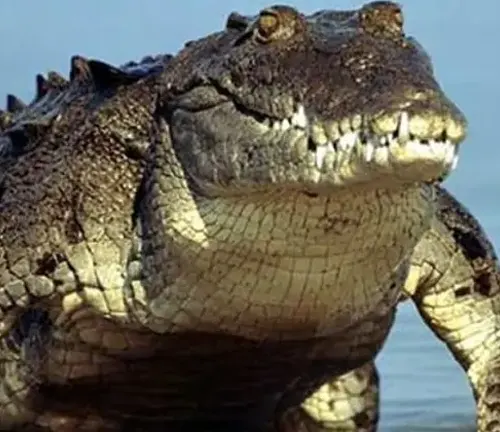

Coloration
The skin of Nile Crocodiles is characterized by a rough texture and dark coloration, which aids in camouflage within their watery environments. Juveniles often have lighter coloration with distinct patterning, which gradually fades as they mature. This natural camouflage helps them blend into their surroundings while hunting or lying in wait for prey.
Body Structure
Nile Crocodiles have streamlined bodies adapted for life both in water and on land. Their powerful jaws are equipped with sharp teeth for capturing and consuming prey, while their muscular tails provide propulsion in the water. Their limbs are positioned directly beneath their bodies, allowing for efficient movement both on land and through the water. Additionally, their eyes, ears, and nostrils are located on the top of their heads, enabling them to remain partially submerged while monitoring their surroundings for potential prey or threats. Overall, their body structure is optimized for survival as apex predators in their natural habitats.

Habitat and Distribution
Natural Range
Nile Crocodiles (Crocodylus niloticus) are native to sub-Saharan Africa, where they are found in a wide range of countries including Egypt, Sudan, Kenya, Tanzania, Uganda, Zimbabwe, and South Africa, among others. They inhabit freshwater habitats such as rivers, lakes, marshes, and swamps across the region. The Nile River and its tributaries serve as important corridors for these crocodiles, allowing them to disperse and establish territories within their natural range.

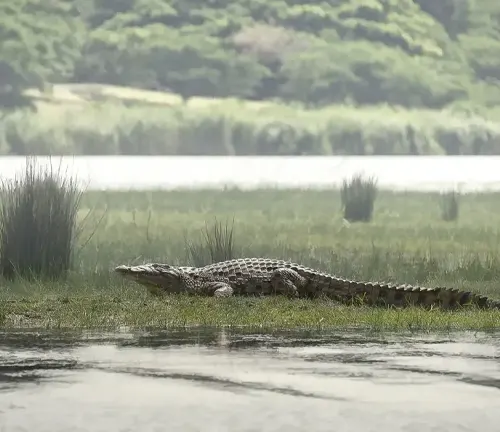
Preferred Environments
Nile Crocodiles typically prefer slow-moving freshwater habitats with ample prey availability and suitable basking sites. They are often found in rivers, lakes, and wetlands with dense vegetation along the banks, providing cover for ambush hunting and nesting sites. These crocodiles are adaptable to various environments and can also tolerate brackish water, occasionally venturing into estuarine environments where freshwater meets the sea. However, they are primarily associated with freshwater habitats, where they can regulate their body temperature, hunt for prey, and engage in other essential behaviors for survival.
Diet and Feeding Habits
Predatory Behavior
Nile Crocodiles are apex predators and exhibit a range of predatory behaviors adapted for capturing and consuming their prey. They are highly opportunistic hunters and use ambush tactics to surprise their prey. Nile Crocodiles often lie in wait near the water’s edge, remaining partially submerged and camouflaged by their dark-colored skin. When prey comes within striking distance, they lunge forward with remarkable speed and force, using their powerful jaws to seize their target. Once caught, prey is typically dragged underwater to drown before being consumed. Nile Crocodiles are known for their patience and stealth, waiting for the perfect moment to strike and secure a meal.
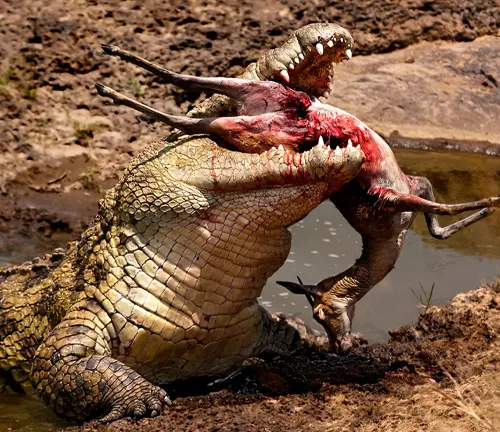
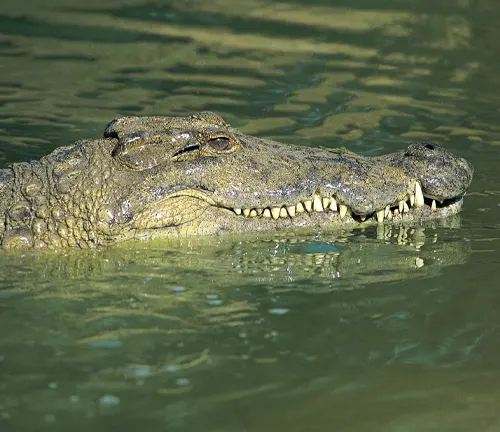
Prey Items
Nile Crocodiles have a diverse diet that includes a wide variety of animals found within their freshwater habitats. Common prey items for Nile Crocodiles include fish, birds, mammals, and other reptiles. They are capable of taking down large prey such as antelopes, zebras, and even buffalo, particularly during times of drought or scarcity. Nile Crocodiles are opportunistic feeders and will consume whatever prey is readily available and within their size range. Their diet may vary depending on factors such as habitat, seasonality, and the abundance of prey species in their environment. Overall, Nile Crocodiles play a crucial role in regulating prey populations and maintaining the balance of ecosystems within their natural range.
Reproduction and Life Cycle
Mating Rituals
Nile Crocodiles engage in elaborate mating rituals during the breeding season, which typically occurs during the dry season in their natural habitats. Male crocodiles compete for access to females, engaging in aggressive displays to establish dominance and attract potential mates. These displays often involve vocalizations, posturing, and physical combat between rival males. Once a male has successfully courted a female, mating occurs in the water, where the male grasps the female’s neck in his jaws and mounts her to facilitate copulation. Mating rituals can be intense and competitive, with dominant males securing mating rights with multiple females within their territory.


Nesting and Hatching
After mating, female Nile Crocodiles construct nests made of vegetation, typically near the water’s edge. The nests are mound-shaped and provide a safe environment for incubating eggs. Females lay clutches of eggs, which can range in size from 25 to 80 eggs depending on factors such as age, size, and environmental conditions. The incubation period for Nile Crocodile eggs is around 80 to 90 days, during which time the female guards the nest and regulates the temperature by adding or removing vegetation. Once the eggs hatch, the hatchlings emit vocalizations to alert the mother, who assists them in breaking free from the eggs and leads them to water. Nile Crocodile hatchlings are precocial, meaning they are immediately capable of swimming and hunting for small prey. The mother provides protection and guidance to her offspring during their early stages of life, helping them to survive and thrive in their aquatic environment.
Behavior and Social Structure
Territorial Nature
Nile Crocodiles exhibit a strong territorial nature, particularly during the breeding season and times of resource scarcity. They establish and defend territories along the banks of rivers, lakes, and other freshwater habitats, which they use for basking, mating, nesting, and hunting. Male crocodiles are especially territorial and will fiercely defend their territories against intruders, including other males and potential threats to their offspring. Territorial displays often involve vocalizations, posturing, and physical combat, with dominant individuals asserting their dominance over rivals. Establishing and maintaining territories is crucial for Nile Crocodiles to secure access to resources and breeding opportunities within their habitats.
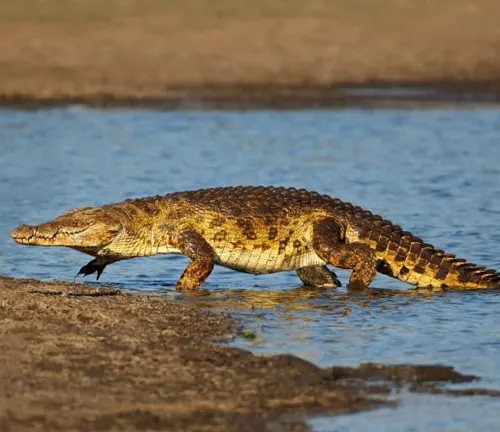
Interaction with Other Crocodiles
While Nile Crocodiles are typically solitary animals for much of the year, they may exhibit some degree of social behavior, particularly during basking periods or breeding season. During these times, crocodiles may congregate in groups known as basks or congregations, where they engage in social interactions such as basking, vocalizations, and courtship displays. However, these interactions can also lead to conflicts between individuals, particularly males competing for mates or territory. Nile Crocodiles may also interact with other crocodile species, although such encounters are less common due to differences in habitat preferences and geographic distribution. Overall, interaction between Nile Crocodiles and other crocodiles is influenced by factors such as social hierarchy, resource availability, and reproductive opportunities, with individuals balancing cooperation and competition to maximize their fitness and survival in their natural environments.
Interactions with Humans
Conservation Status
Nile Crocodiles (Crocodylus niloticus) are currently classified as a species of Least Concern on the IUCN Red List of Threatened Species. However, this designation does not mean that Nile Crocodiles are not facing conservation challenges. While they are widespread and relatively abundant across their natural range in sub-Saharan Africa, certain populations are more vulnerable due to habitat loss, poaching, and human-wildlife conflict. As apex predators, Nile Crocodiles play a crucial role in maintaining the health of aquatic ecosystems, and their conservation is essential for preserving biodiversity and ecosystem balance. Conservation efforts focus on habitat protection, anti-poaching measures, and community-based initiatives aimed at reducing conflicts between humans and crocodiles.
Conflicts and Attacks
Conflicts between humans and Nile Crocodiles occasionally occur in areas where their habitats overlap, leading to attacks on humans or domestic animals. These conflicts often arise due to competition for resources such as water, fish, or livestock, as well as encroachment into crocodile habitats for agriculture or development. While Nile Crocodile attacks on humans are relatively rare, they can be fatal when they do occur. Attacks typically happen near water bodies where people are swimming, fishing, or washing clothes, with crocodiles ambushing unsuspecting prey. Prevention strategies include education about crocodile behavior and habitat, implementing safety measures around water bodies, and developing protocols for managing conflicts to minimize risks to both humans and crocodiles. By promoting coexistence and understanding between people and crocodiles, it is possible to mitigate conflicts and reduce the likelihood of attacks, ensuring the continued survival of both species in their shared environments.

Cultural Significance
In Ancient Egypt
Nile Crocodiles held significant cultural and religious importance in ancient Egyptian society. They were often associated with the god Sobek, who was depicted as a crocodile-headed deity representing fertility, protection, and the Nile River’s power. Crocodiles were revered and feared by ancient Egyptians, with rituals and offerings made to appease them and seek their favor. Crocodile mummies have been discovered in ancient Egyptian tombs, indicating the reverence and respect with which they were held. Additionally, crocodile-shaped artifacts and hieroglyphs featuring crocodiles are found throughout ancient Egyptian art and architecture, emphasizing their symbolic significance in the culture and beliefs of the time.
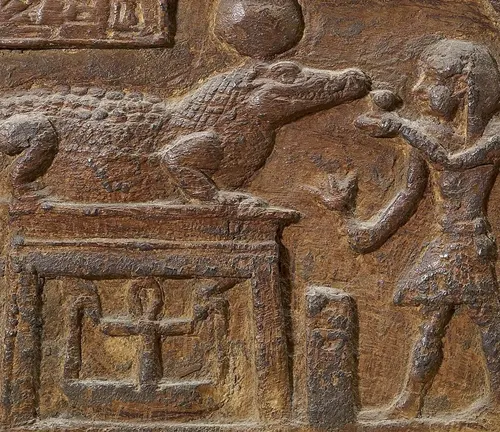
Modern Representations
In modern times, Nile Crocodiles continue to be depicted in various forms of art, literature, and popular culture, often symbolizing strength, danger, and the mystique of the African wilderness. They are featured in wildlife documentaries, where their predatory behaviors and ecological roles are explored. Nile Crocodiles also appear in literature and films, where they are often portrayed as formidable adversaries or exotic creatures inhabiting remote and mysterious landscapes. Additionally, crocodile-themed merchandise and souvenirs are popular among tourists visiting areas where Nile Crocodiles are found, serving as reminders of the fascination and awe inspired by these ancient reptiles. Despite their fearsome reputation, Nile Crocodiles remain a source of intrigue and inspiration in the modern world, reflecting the enduring legacy of their cultural significance in ancient Egypt and beyond
Conservation Efforts
Threats to Survival
Nile Crocodiles face several threats to their survival, primarily as a result of human activities and habitat degradation. Some of the main threats include:
- Habitat Loss: Destruction and degradation of freshwater habitats due to urbanization, agriculture, and infrastructure development threaten the availability of suitable habitat for Nile Crocodiles.
- Poaching: Illegal hunting for crocodile skins, meat, and body parts poses a significant threat to Nile Crocodile populations, particularly in areas where they are valued for traditional medicine or cultural purposes.
- Human-Wildlife Conflict: Encounters between Nile Crocodiles and humans can lead to conflicts, with crocodiles preying on livestock or posing risks to human safety. Retaliatory killings and habitat disturbance as a result of these conflicts further endanger crocodile populations.
- Climate Change: Changes in temperature and precipitation patterns, as well as increased frequency of extreme weather events, can impact Nile Crocodile habitats and prey availability, potentially disrupting their populations and distribution.
Conservation Measures
To address these threats and ensure the long-term survival of Nile Crocodiles, various conservation measures have been implemented, including:
- Habitat Protection: Establishing protected areas and wildlife reserves where Nile Crocodiles are conserved alongside other species helps safeguard their habitats from further degradation and provides safe havens for breeding and nesting.
- Anti-Poaching Initiatives: Strengthening law enforcement efforts to combat illegal hunting and trade of Nile Crocodiles and their products is essential for reducing poaching pressure on wild populations.
- Community-Based Conservation: Engaging local communities in crocodile conservation efforts through education, awareness-raising, and sustainable livelihood initiatives helps foster coexistence and support for crocodile conservation.
- Research and Monitoring: Conducting scientific research to better understand Nile Crocodile ecology, behavior, and population dynamics informs conservation strategies and management decisions aimed at protecting crocodile populations.
- Collaboration and Partnerships: Collaborating with government agencies, non-profit organizations, and international stakeholders enables coordinated conservation efforts across national borders and enhances the effectiveness of conservation measures for Nile Crocodiles.
Different Species
American Crocodile
(Crocodylus acutus)
Found in the Americas, from southern Florida and the Caribbean through Central America and South America. They primarily inhabit coastal areas, estuaries, and mangrove swamps.
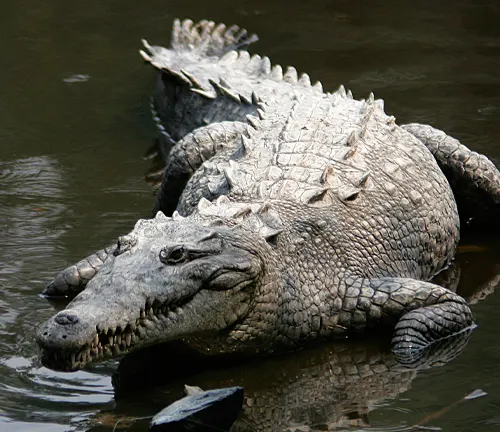
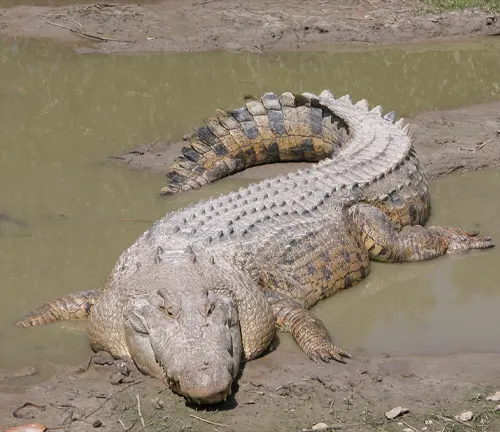
Saltwater Crocodile
(Crocodylus porosus)
Also known as the estuarine crocodile, this species is the largest of all living reptiles. They are found in brackish and saltwater habitats across Southeast Asia, Northern Australia, and the eastern coast of India.
Australian Freshwater Crocodile
(Crocodylus johnsoni)
Native to Australia, these crocodiles inhabit freshwater habitats such as rivers, lakes, and billabongs in the northern regions of the country.
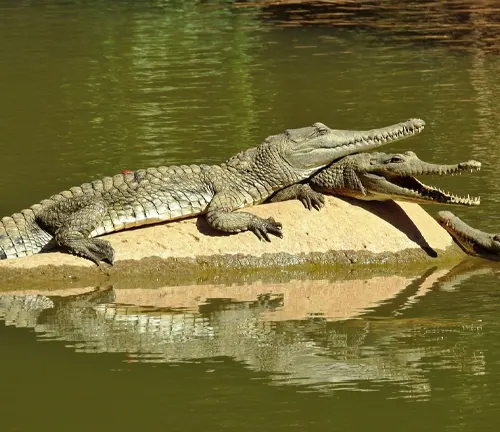
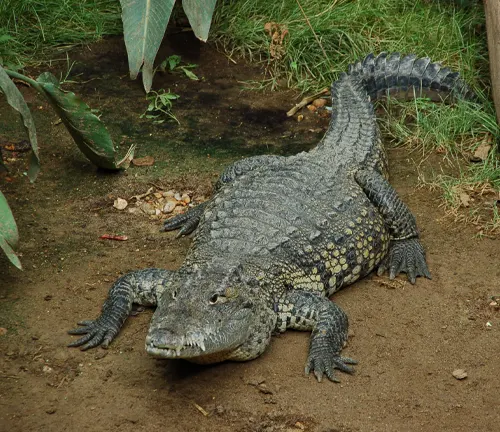
Morelet’s Crocodile
(Crocodylus moreletii)
Found in freshwater habitats in Mexico, Belize, and Guatemala, this species is smaller than some other crocodiles and typically inhabits rivers, swamps, and marshes.
Cuban Crocodile
(Crocodylus rhombifer)
Endemic to Cuba, these crocodiles inhabit freshwater habitats such as rivers, swamps, and marshes. They are known for their distinctive bony plates on their backs.
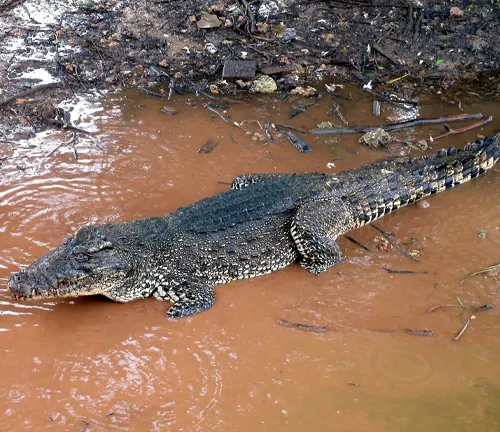

Siamese Crocodile
(Crocodylus siamensis)
Native to Southeast Asia, including Cambodia, Laos, Thailand, and Vietnam, this critically endangered species inhabits freshwater habitats such as rivers, lakes, and marshes.
Philippine Crocodile
(Crocodylus mindorensis)
Endemic to the Philippines, this critically endangered species inhabits freshwater habitats such as rivers and marshes on the islands of Luzon, Mindanao, and smaller surrounding islands.
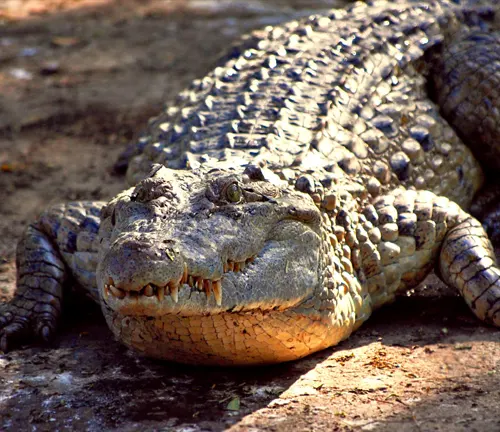
Frequently Asked Question (FAQs)
- Are Nile Crocodiles dangerous to humans?
Nile Crocodiles are considered one of the most dangerous species of crocodiles to humans. They are responsible for numerous attacks on humans each year, particularly in areas where human and crocodile habitats overlap. - How fast can Nile Crocodiles swim?
Nile Crocodiles are capable of swimming at speeds of up to 20 miles per hour (32 kilometers per hour) in short bursts, making them formidable predators in aquatic environments. - What do Nile Crocodiles eat?
Nile Crocodiles are apex predators and feed on a variety of animals including fish, birds, mammals, and even other reptiles. Their diet varies depending on availability and opportunity. - How big do Nile Crocodiles get?
Adult male Nile Crocodiles can reach lengths of up to 16 feet (5 meters) or more, while females are typically slightly smaller, ranging between 10 to 13 feet (3 to 4 meters) in length. - Where do Nile Crocodiles live?
Nile Crocodiles primarily inhabit freshwater habitats such as rivers, lakes, and marshes across sub-Saharan Africa. They are found in countries including Egypt, Sudan, Kenya, and South Africa. - How long do Nile Crocodiles live?
In the wild, Nile Crocodiles can live up to 70 years or more, while individuals in captivity may live even longer with proper care and management. - Are Nile Crocodiles endangered?
Nile Crocodiles are currently classified as a species of Least Concern by the IUCN Red List, although certain populations are more vulnerable due to habitat loss and human activities. - Do Nile Crocodiles make good pets?
Nile Crocodiles are not suitable as pets due to their size, aggressive nature, and specialized habitat requirements. Keeping them as pets is also often illegal and poses serious safety risks. - How do Nile Crocodiles reproduce?
During the breeding season, male Nile Crocodiles engage in elaborate displays to attract females. After mating, females lay eggs in nests constructed of vegetation near the water’s edge, where they are incubated until hatching. - What are the differences between Nile Crocodiles and other crocodile species?
Nile Crocodiles have specific physical characteristics and behaviors that distinguish them from other crocodile species, such as their size, coloration, habitat preferences, and geographic distribution. - What adaptations do Nile Crocodiles have for survival?
Nile Crocodiles have numerous adaptations for survival, including armored skin for protection, powerful jaws for hunting, efficient respiratory systems for extended periods underwater, and the ability to regulate body temperature. - Can Nile Crocodiles live in saltwater?
While Nile Crocodiles primarily inhabit freshwater habitats, they are capable of tolerating brackish water and occasionally venture into estuarine environments. However, they are not typically found in open saltwater habitats. - How do Nile Crocodiles communicate with each other?
Nile Crocodiles communicate through vocalizations, body language, and chemical signals. During the breeding season, males may produce low-frequency bellows to attract females. - What predators do Nile Crocodiles have?
Adult Nile Crocodiles have few natural predators due to their size and aggressive nature. However, hatchlings and juveniles may be preyed upon by birds, large fish, and other predators. - How do Nile Crocodiles hunt?
Nile Crocodiles use ambush tactics to hunt their prey, lying in wait near the water’s edge before launching sudden attacks. They often grab their prey with their powerful jaws and drag it underwater to drown it before consuming it.


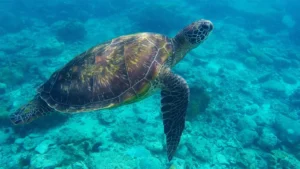
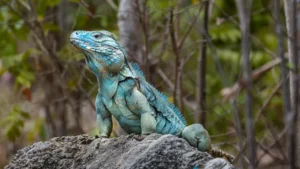
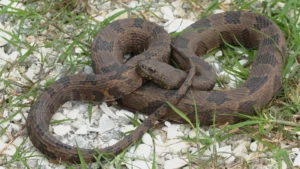
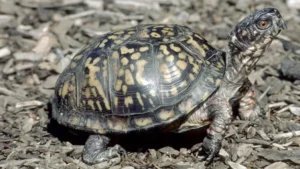
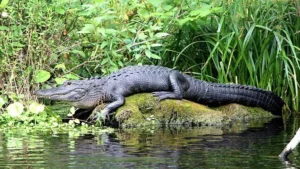


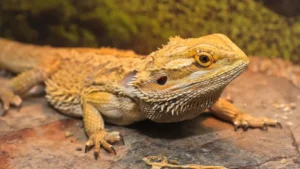

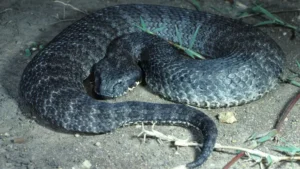
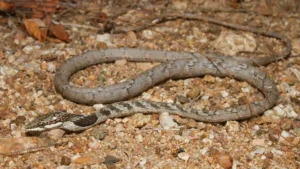

Leave your comment